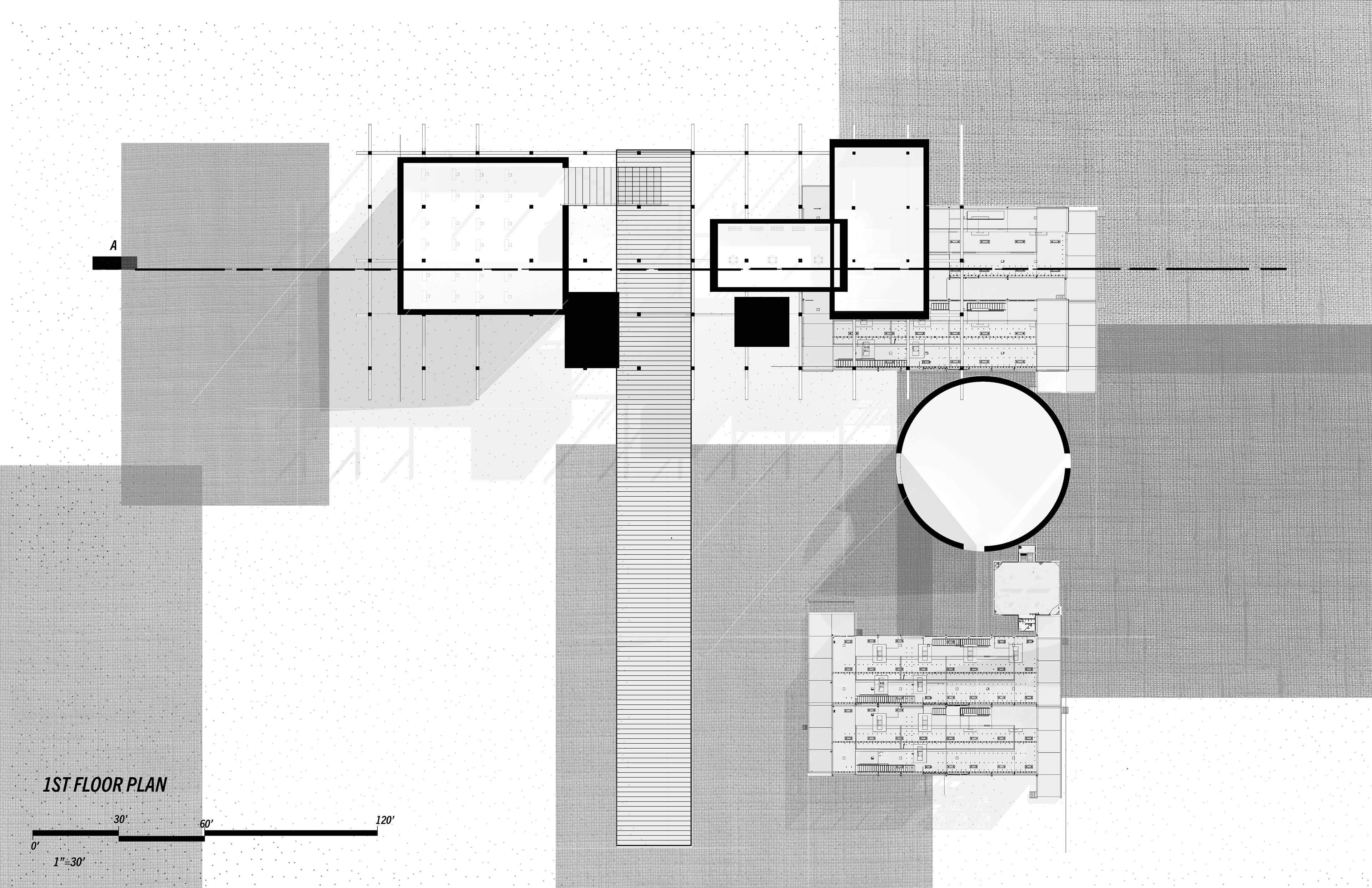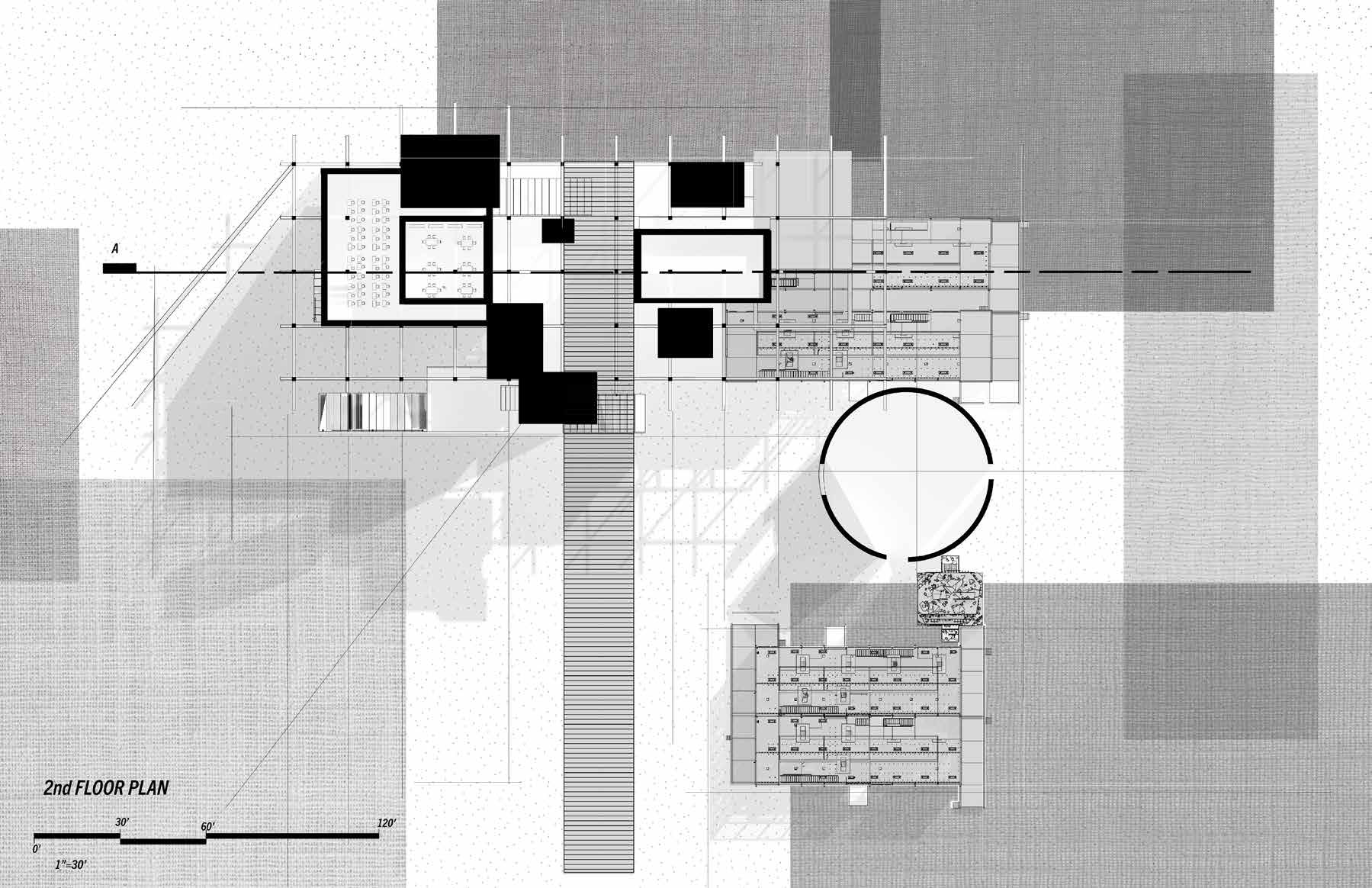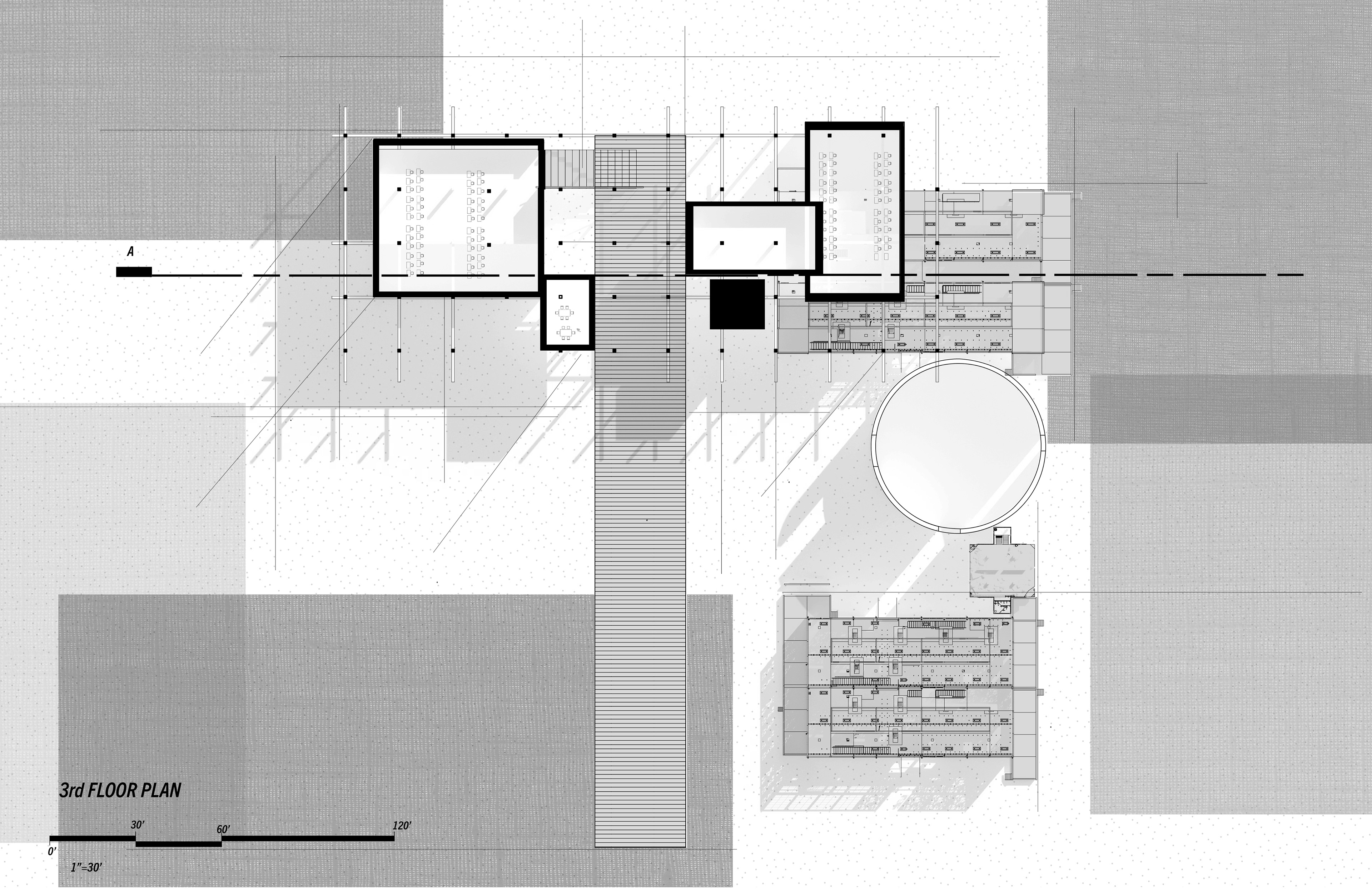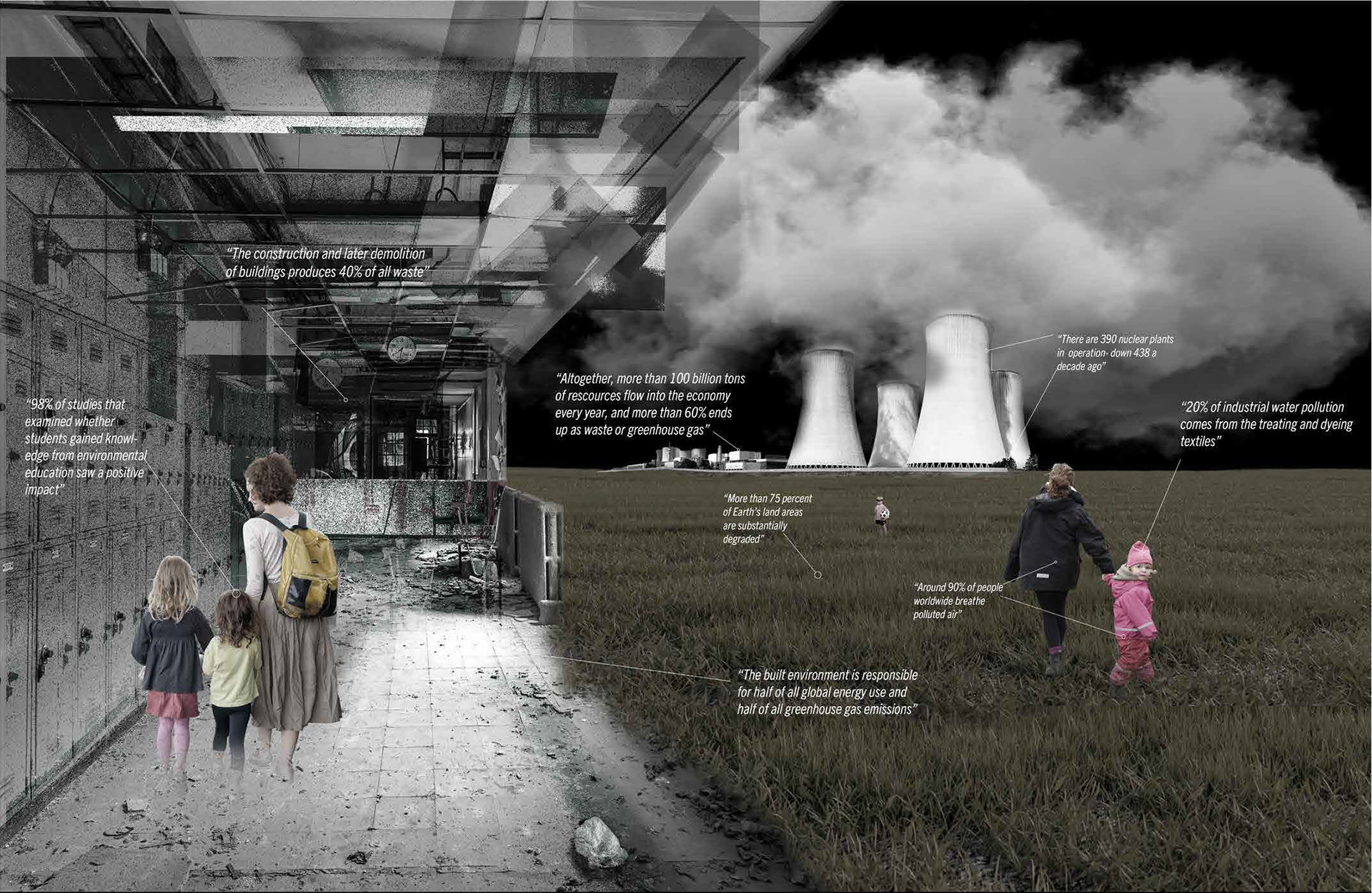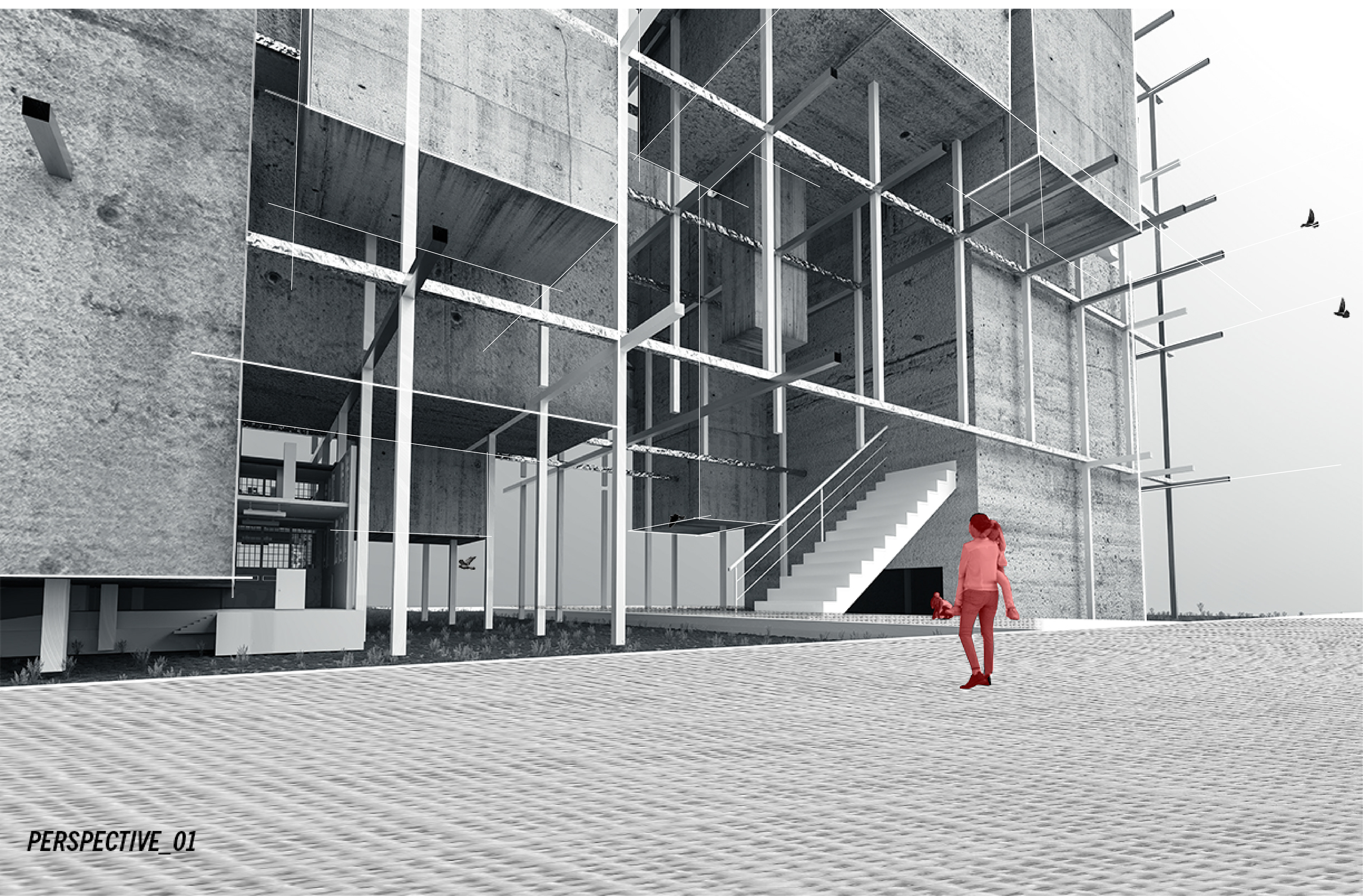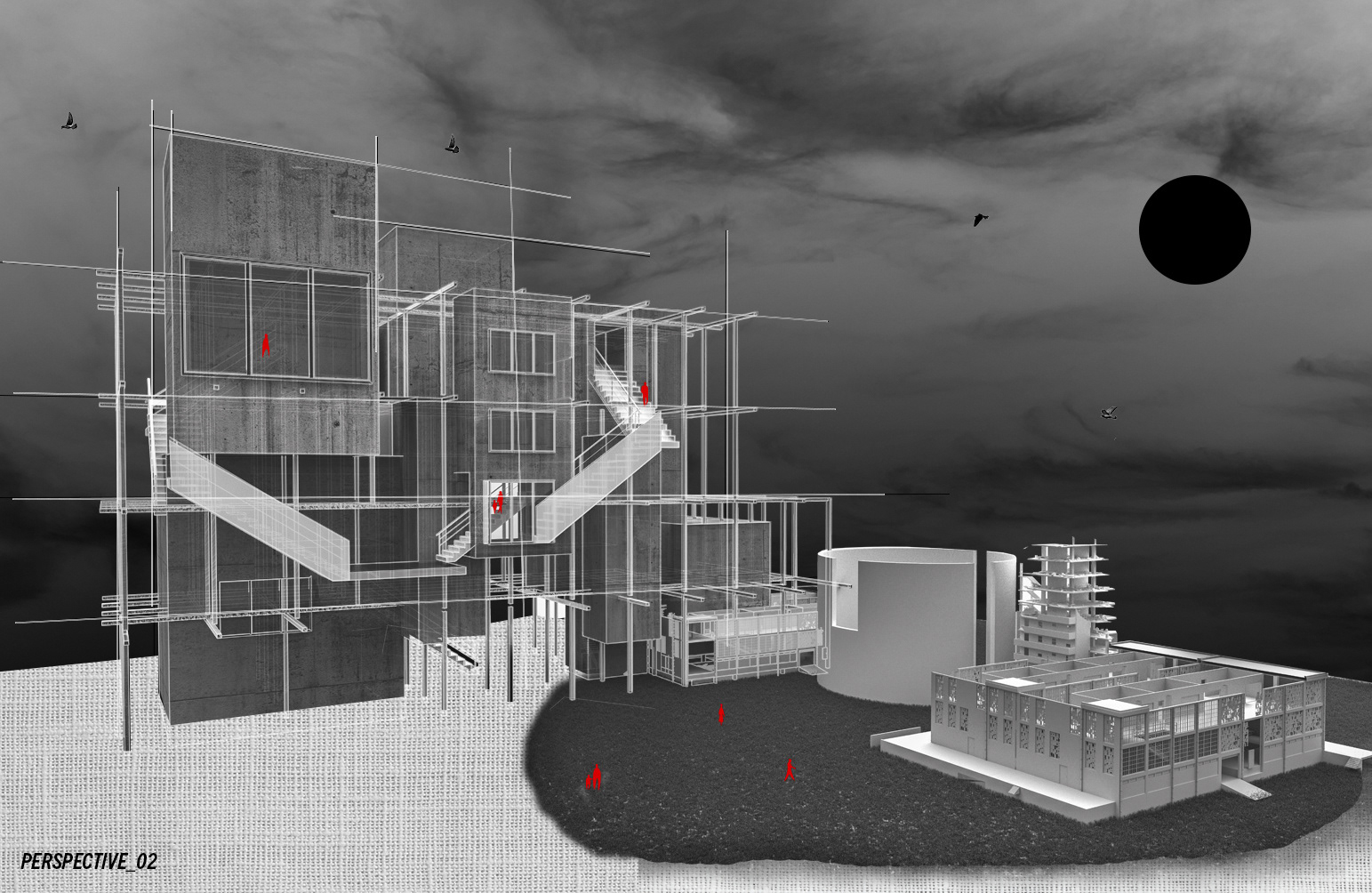STUDIO BRIEF:
This studio’s final project is about looking at Territories of Value. The students have been asked to question architecture in relation to one’s beliefs. In addition to considering architecture as a representation of a societal, cultural, or personal value - they have also been asked to consider architecture in terms of problem solving. Their projects, therefore, analyze how architecture can provide a solution to a problem, potentially make a problem worse, and/or simply highlight a specific condition. The work stemming from these concepts is situated in a speculative site that was designed by the students. The speculative site features a series of bizarre spatial conditions around which the students produced an architecture.
The Phipps Bend Nuclear Power Plant is an unfinished nuclear power plant located in Tennessee, USA. Its imposing concrete structures and rusting metal components have made it a symbol of urban decay and a popular setting for dystopian movies, TV shows, and video games.
The plant's role in dystopian society reflects the fear and uncertainty surrounding nuclear power and the potential consequences of technological progress gone wrong. The abandoned and decaying plant represents a world where humanity has failed to control the power of technology, leading to a bleak and dangerous future.
The Phipps Bend Nuclear Power Plant is an example of how architecture and infrastructure can become a visual representation of societal fears and anxieties. Its dramatic appearance has made it a popular cultural reference in dystopian fiction, while efforts to repurpose it for new uses demonstrate the potential for adaptive reuse of existing infrastructure to mitigate the impacts of urban decay and contribute to the revitalization of urban areas.
My call to action against the uprising issue of urban decay was to populate the site, along with the preexisting conditions, with an elementary school. Although somewhat provocative, the students would be able to see the damage that has been done to the earth throughout history, taking a preventative approach to bio sustainability instead of trying to fix the damage that is already done.
